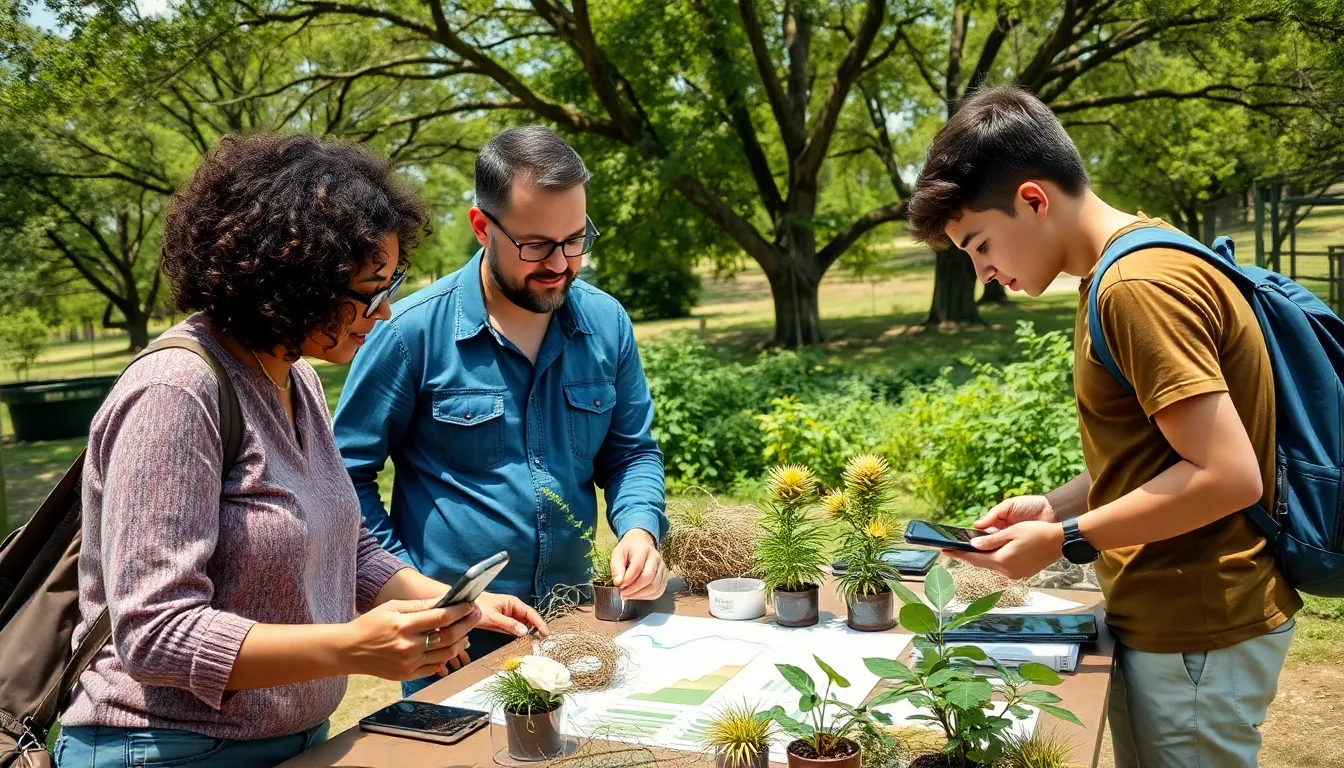Table of Contents
ToggleAs the world grapples with the escalating impacts of climate change, understanding climate considerations becomes essential for individuals, businesses, and governments alike. These considerations not only shape environmental policies but also influence economic strategies and social behaviors.
From sustainable resource management to reducing carbon footprints, the choices made today will determine the planet’s future. By integrating climate considerations into everyday decisions, everyone can contribute to a more resilient and sustainable world. This article explores key aspects of climate considerations, offering insights on how they affect various sectors and highlighting the importance of proactive measures in combating climate change.
Understanding Climate Considerations
Understanding climate considerations involves evaluating how environmental changes impact social, economic, and ecological systems. These considerations play a critical role in shaping effective policies and practices to mitigate climate change.
Environmental Policies
Environmental policies encapsulate regulations aimed at protecting natural resources. They guide the management of air quality, water conservation, and waste reduction. For example, the Clean Air Act in the United States aims to regulate emissions from industrial sources. Strong environmental policies can lower greenhouse gas emissions and enhance the resilience of ecosystems.
Economic Strategies
Economic strategies focus on fostering sustainable growth while considering environmental impacts. Investments in renewable energy sources, such as solar and wind, exemplify strategies reducing dependency on fossil fuels. These investments contribute to job creation in the green economy and stimulate financial markets.
Social Behaviors
Social behaviors significantly influence climate considerations. Community initiatives for recycling, energy conservation, or sustainable agriculture demonstrate active participation in climate action. For instance, urban areas implementing public transportation systems reduce road congestion and lower carbon emissions.
Sustainable Resource Management
Sustainable resource management ensures the prudent use of natural resources. This practice aims to maximize resources while minimizing environmental degradation. Examples include forestry management practices that promote consistent growth and biodiversity.
Reducing Carbon Footprints
Reducing carbon footprints involves decreasing individual and organizational greenhouse gas emissions. This can be achieved through energy efficiency measures, such as using LED lighting and energy-efficient appliances. Companies adopting carbon offset programs illustrate proactive efforts toward sustainable practices.
Future Implications
Future implications underscore the long-term effects of climate considerations on global health, biodiversity, and economic stability. Proactive measures taken today establish a foundation for a sustainable future. Collaborative efforts across sectors enhance resilience against future climate challenges while fostering innovation and growth.
Key Factors Influencing Climate Considerations

Climate considerations significantly depend on various factors that directly impact the environment and society. Understanding these influences is vital for developing effective policies and strategies.
Greenhouse Gas Emissions
Greenhouse gas emissions are primary contributors to climate change. Human activities, including transportation, industry, and agriculture, release carbon dioxide, methane, and nitrous oxide. In 2021, global carbon dioxide emissions reached approximately 36.4 billion metric tons, underscoring the urgent need for emission reduction strategies. Implementing cleaner technologies, transitioning to renewable energy sources, and enhancing energy efficiency are crucial steps for lowering these emissions. Policies promoting electric vehicles, sustainable farming practices, and carbon capture technologies can significantly mitigate the impact of greenhouse gases.
Natural Resource Management
Natural resource management plays a critical role in climate considerations. Sustainable practices ensure that water, soil, and forests are used efficiently while preserving ecosystem health. For example, responsible forestry can enhance carbon sequestration, while efficient water management can reduce stress on local ecosystems. The Food and Agriculture Organization (FAO) reported that land degradation affects 1.5 billion people globally, highlighting the need for improved land-use practices. Strategies such as reforestation, regenerative agriculture, and conservation efforts promote resiliency and sustainability. Collaboration between governments, businesses, and communities enhances resource management effectiveness, benefiting both the environment and society.
Climate Considerations in Policy Development
Climate considerations significantly impact policy development, guiding decisions at global and local levels. Policymakers align strategies with sustainable practices, legal frameworks, and international agreements to address climate change effectively.
International Agreements
International agreements play a crucial role in uniting countries toward climate goals. Treaties like the Paris Agreement set binding targets for greenhouse gas reduction, encouraging countries to commit to emissions targets. Compliance mechanisms ensure accountability, while negotiation processes lead to innovative climate solutions. The United Nations Framework Convention on Climate Change (UNFCCC) facilitates global dialogues that influence national policies and funding for climate initiatives. Successful implementation of these agreements often relies on cooperative efforts among states, private sectors, and civil society to address shared climate challenges.
Localized Initiatives
Localized initiatives address climate considerations within specific communities. Programs that promote urban green spaces reduce heat islands, improve air quality, and enhance local biodiversity. Local governments implement renewable energy projects, such as solar panel installations, to reduce dependence on fossil fuels. Community-driven efforts, like recycling programs and local food systems, encourage sustainable practices while fostering environmental awareness. Engaging local populations ensures that initiatives reflect community values and needs, leading to more effective climate action at the grassroots level. Collaboration among local organizations further amplifies the impact of these initiatives, ensuring broader participation and commitment to sustainability.
The Role of Technology in Addressing Climate Considerations
Technology plays a pivotal role in addressing climate considerations by providing innovative solutions to reduce greenhouse gas emissions and enhance sustainability. Various technological advancements focus on renewable energy, smart infrastructure, and carbon capture methods.
Renewable Energy Technologies
- Solar Power: Solar panels convert sunlight into electricity, significantly decreasing reliance on fossil fuels. In 2022, solar energy contributed approximately 20% of global renewable electricity generation.
- Wind Energy: Turbines harness wind power to produce clean energy. Wind farms can generate enough electricity to power thousands of homes, with global installed capacity exceeding 800 gigawatts in 2021.
- Hydropower: Leveraging flowing water, hydropower generates electricity while maintaining low emissions. It remains the largest source of renewable energy, contributing over 16% of the world’s electricity.
Energy Efficiency Technologies
- Smart Grids: These systems enhance electricity delivery and usage efficiency, integrating data analytics for real-time monitoring. Smart grids can reduce energy loss by up to 30%.
- Building Automation Systems: These technologies optimize heating, cooling, and lighting in buildings, leading to energy savings ranging from 15% to 30%.
- Efficient Appliances: Modern appliances use less energy than their predecessors, with Energy Star-rated products consuming at least 10% to 50% less energy.
Carbon Capture and Storage (CCS)
- Carbon Capture Technologies: These methods capture carbon dioxide emissions from industrial sources. Facilities implementing CCS can reduce emissions by up to 90%.
- Utilization Solutions: Captured CO2 can be repurposed for industrial applications, such as producing synthetic fuels or enhancing oil recovery, creating a circular economy approach.
Data and Analytics
- Climate Modeling: Advanced computer models simulate climate patterns, providing crucial data for predicting future climate scenarios. These models help inform policy decisions and resource allocation.
- IoT Sensors: Internet of Things devices monitor environmental conditions and energy consumption, facilitating real-time data collection and enabling informed decision-making to enhance sustainability.
Sustainable Agriculture Technologies
- Precision Agriculture: Employing GPS and AI, precision agriculture optimizes crop management, reducing water use and chemical application while maximizing yield. This approach can decrease fertilizer usage by 20% to 30%.
- Vertical Farming: Utilizing urban spaces, vertical farms grow produce in controlled environments, minimizing land use and transportation emissions.
Technological innovations represent essential tools in combating climate change, enhancing resource management, and fostering sustainable practices across various sectors.
Addressing climate considerations is vital for ensuring a sustainable future. As the impacts of climate change become increasingly evident, prioritizing effective policies and practices is essential. By focusing on sustainable resource management and reducing carbon footprints, individuals and communities can contribute to a healthier planet.
The role of technology in this endeavor cannot be overstated. Innovative solutions in renewable energy and energy efficiency pave the way for significant reductions in greenhouse gas emissions. Collaboration among governments, businesses, and local communities is crucial for fostering resilience and sustainability.
Ultimately, the choices made today will shape the world of tomorrow. Embracing climate considerations not only enhances environmental health but also promotes economic stability and social well-being. It’s a collective responsibility that requires immediate action for lasting change.







